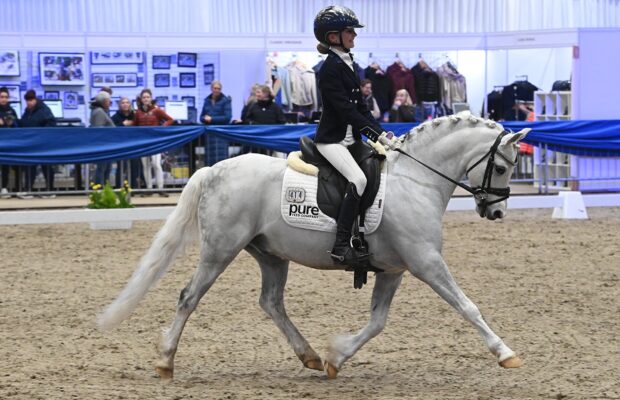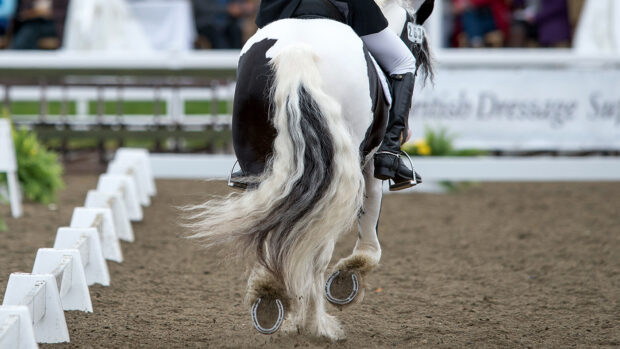Simon Charlesworth began his showing career as a child. His first win at Horse of the Year Show (HOYS) was the coloured championship with Merrigan in 2003. In 2012, aged 29, Simon won the horse supreme at HOYS with Pearly King, becoming the youngest adult rider to earn the top title in the supreme’s 33-year history.
Training the stars
I’m a firm believer that horses reflect how they’re educated — if a horse is slow off the leg, it means he hasn’t been taught to react quickly to the leg. However, this can be a relatively easy issue to solve with time and consistency. A horse should do his job when asked with the lightest of touches. To achieve this, you must be clear and definitive in your aids, and ride with a secure seat with good control over your legs. The horse needs to give an immediate reaction to your aids.
- Merrigan was initially very laid back, but genuine. Using these exercises, he learnt to give a very light and responsive ride.
- Military Crisis was another horse who didn’t want to go forward, but he was miserable. He’d become bored by going to too many shows as a young horse. We worked through it and he came right in the end.
- If there’s a change in your horse’s behaviour, there’s usually a reason. Colbeach Starlight Express became lethargic and a blood test revealed he was anaemic.
Tackling the issue
1. Short bursts of work are much more beneficial than long periods of schooling. Stop and give your horse a rest. It’s better to do five to 10 minutes of good work than 45 minutes of moderate work.
2. Do lots of transitions — in quick succession and in different combinations. They keep the horse thinking. For example, walk to trot, trot to canter, walk to canter, canter to halt, and halt to trot. By varying the transitions and the speed of each gait, you avoid the horse anticipating.
3. If your horse becomes nappy and doesn’t want to go forward, start by having long reins (you don’t need much contact and don’t worry about your horse being in a shape) and ride a very forward trot. Usually, after seven to 10 days of this, your horse will start to learn and enjoy going forward. Then slowly, over the next week, start to shorten up your contact while keeping the impulsion.
4. Introduce your horse to lateral work. Turn on the forehand and turn on the haunches from halt and in walk will make your horse more responsive to your leg aids. Start by doing this up against the fence. Build up to more lateral work such as shoulder-in and leg-yield.
5. Variation is good. Introduce polework to get your horse looking forward and through the bridle. Hack out for a change of scenery and work on transitions and leg-yield while on the roads or bridleways.
Things to consider…
- Some horses don’t like tongue pressure and won’t go forward because of it. For these horses, I recommend trying a Bombers Happy Tongue or a Beris ported bit
- Slow-release energy feed can help
- Check your horse is in full health and that there’s not an underlying reason why he’s not going forward
- Self-reflection — are you consistent and clear with your aids?
- Praise your horse when he does it right
You may also be interested in…

#SundaySchool: How can I achieve a soft contact?
Dressage rider Jessica Dunn explains how to achieve harmony in the hand and stop a horse resisting the bridle

#SundaySchool: How to teach a horse to halt square

Subscribe to Horse & Hound magazine today – and enjoy unlimited website access all year round
Horse & Hound magazine, out every Thursday, is packed with all the latest news and reports, as well as interviews, specials, nostalgia, vet and training advice. Find how you can enjoy the magazine delivered to your door every week, plus options to upgrade your subscription to access our online service that brings you breaking news and reports as well as other benefits.




